Alex Itsios's Blog
October 11, 2025
Experimenting, Failing, and Learning: My Road to Making Better Games
It’s been a long time since I felt that good about my game development journey. I’ve learned a bunch of newstuff in Unreal Engine and Dialogic/Godot over the last couple of weeks thatkeep me focused and motivated.
As I mentioned in my previous devlogs,I’m focusing on two projects to get myself accustomed to new engines and tech.
Let me give you a quick breakdown.
Rogue ShiftersI’ll start with Rogue Shifters. Thisproject is basically a precursor in terms of learning and technology forParallel Pulse. I want to develop a full-blown visual novel in Dialogic,creating systems close to what I’m going to need for Parallel Pulse. Initially,I wanted to mimic the exact same approach by having multiple bubbles on thesame screen. It seems that making this type of setup would need a lot of codeimplementation, making things extremely hard for me to proceed with my game.The solution is simple, and I can pretty much do it with workarounds, havingonly one bubble at a time within the screen. It’s not what I wanted, but the difficulty levelincreases by X10 if I go with multiple bubbles. I probablyshouldn’t stress myself too much about it, and I have a lot of people tellingme they prefer only one bubble at a time because it’s easier to read. To myknowledge, the only engine capable of doing something like this efficiently is Ren’Py, which this year incorporated an easy bubble system.
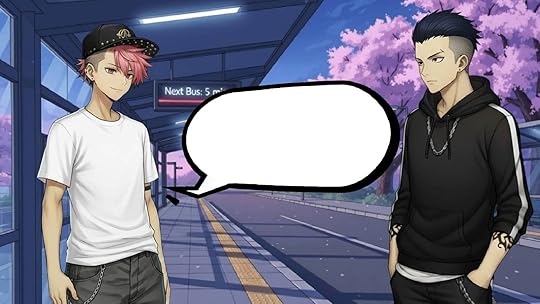 Exploring Dialogue Bubble Presentation in Dialogic 2
Exploring Dialogue Bubble Presentation in Dialogic 2
In terms of assets, I have the basicposes for the two protagonists and the basic roster, but I’m missing a fewimportant ones. It’s not clear to me how I want them to be presented visually.That being said, I’m still polishing the assets, such as upscaling, cleaning,and outlining the characters. Also, I’m missing the majority of the backgroundimages, but I don’t see this being an issue since Idon’t have a lot of locations. When I wrote the script back in 2022, I wrote itwith economy in mind to save on assets. I’m a little bit concerned about theanimations since I’m not that familiar with tweens in Godot, but that’s why I’mmaking this project: an opportunity to learnthe engine and familiarize myself with Dialogic. I don’t have a clear timelinefor this one, but it could be ready in a few months if I focused myselfin it. A rough estimation for this one is Q1 of 2026.
Project EdenfallThis is a fairly ambitious soloproject since it’s the first time I’m making something as challenging as thisone. It includes making 3D models, levels, a combat system, and a dialoguesystem in Unreal. I’m trying to build my stack in anefficient way, so that I can build my next games usingthis one as a base. I’m surprised how manythings I’ve learned in the last couple of weeks, and what’s most important is that I encountered issues I would never have imagined, such asfinding proper animations, fixing fingers, and debugging the system. Thisproject motivates me the most right now because Ialways wanted to make games in Unreal Engine, especially 3D with a blend of 2dvisual novel style. I don’t have a timeline for this one either, and I’m not even sure if I’ll manage to finish it: level design is myweak point and dialogue systems in Unreal Engine can befairly complex, but similar to Rogue Shifters, this project aimsto help me learn the engine to make better games in the future.
 Retargeting Animations from GASP
Retargeting Animations from GASP
Objectively, the biggest issue I havewith this project is the lack of vision and direction. It’s not like I have aclear view of what I want to make, but I’m expanding based on what I can makeand what’s possible with my current level. For example, I started experimentingwith 2.5D environments to make a sidescrolleronly to realize this wouldn’t be possible given the lack of proper assets, letalone the complexity in terms of level design. The original idea was for theplayer to navigate the 2.5D levels in sidescroller mode, then have an RPGvisual novel style to interact with NPCs and get missions. I decided to changeit to a hack-and-slash arena game where you take on missions via a map, clearthe arenas, then interact in VN style with the rest of the character roster.This seems way more intuitive and fits the tone of the game. The reason I tookthis turn was because creating landscapes and materials in in full were easier to make given the existing pipeline.
Conclusion(of this post)To wrap things up, I finally feel likeI’m moving in the right direction again. Both Rogue Shifters and Edenfall areteaching me different things: one helps me refine mystorytelling and systems, the other pushes my technical limits in Unreal. It’snot about finishing them fast but about building the foundation I need for thegames I really want to make. For the first time in a while, I feel confidentthat every hour I put in brings me closer to that goal.
October 1, 2025
How AI Convinced Me to Keep Making Games
With Cook or Be Cooked coming up next on Steam, and me having released roughly a dozen games so far (admittedly the majority of them jam games), I had decided to stop doing game development and potentially cancel Parallel Pulse.
What changed my decision was the arrival of new technologies—specifically AI—and my shift toward solo development for the majority of my projects.
Why this change of heart, you might ask, and why is it that AI convinced me to continue down this path? The reasons are several: solo development for indie games is more possible than ever. A single person who’s a generalist can now develop full games by themselves. It’s cost-effective and faster compared to traditional development. And finally, one person can now compete with teams made up of a dozen or more people.
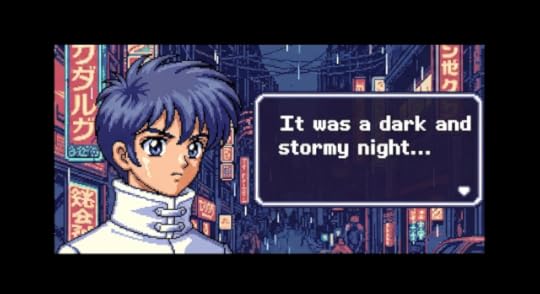 Experimental VN style made with AI in a PC-98 aesthetic. It’s the kind of niche project I’d normally never pursue since it wouldn’t reach the market.
Experimental VN style made with AI in a PC-98 aesthetic. It’s the kind of niche project I’d normally never pursue since it wouldn’t reach the market.There’s a lot of talk about AAA replacing people with AI, and yes, we’ve seen that to some extent—but the real concern is actually smaller teams or solo devs who can use AI effectively and create high-quality games faster and more efficiently. That could become a real issue for big corporations and big studios. Adapting to rapidly expanding technologies is going to be much more challenging for AA or AAA studios than it is for solo or indie developers. That’s why I think incorporating AI as a solo developer, or as part of a micro team, can have a huge impact right now.
In a way, this reminds me of the early days of the internet, when small businesses or even individuals grew into big businesses because they embraced it early.
This doesn’t mean that every single game I make from now on will use AI. Parallel Pulse will still be developed the traditional way, since that’s how I started it. But for smaller-scope projects—things I want to test, experiments, or quick builds to train new skills—I’ll use AI as much as possible to push myself forward.
September 13, 2025
Roadmap Update: From Steam Launch to Future Projects
It’s been roughly seven months since the last update, andwith the upcoming release of Cook or Be Cooked on Steam, I think it’snecessary to update everyone and also put my thoughts in order.
Cook or Be Cooked Cook or be Cooked Key Art
Cook or be Cooked Key ArtThe project wrapped up production around January of thisyear and is ready for release. Although I was planning for an earlier launch, Iwanted to give the game the chance it deserved and see if it could get a strongrelease. I’ve presented the game at Athenscon convention last year and thepeople who played it really loved the story and the artwork, which motivated meto apply to Gamescom through the Hellenic Film & Audiovisual Center.
The game was selected in the top 10 from the Center, givingme the opportunity to attend the biggest convention in the world once more.This time I focused on finding a publisher as well as participating in theSteam event, hoping to gain several hundred or even thousands of wishlists,which could boost the game’s visibility. As you might know, you usually needaround 7,000 wishlists before release, otherwise the Steam algorithm won’t pickit up.

 Greek Video Games Booth at Gamescom (Business Area)
Greek Video Games Booth at Gamescom (Business Area)On publishers: I talked to a handful, and two wereinterested in the game. The first thing I did after returning from Gamescom wasto immediately send a working build as well as a pitch deck. It’s been threeweeks since then with no replies, which is a clear indication they’re notinterested. My plan was that if I could get enough funding, I’d expand the gameto 6–8 hours of gameplay. Since I don’t have the funds, the game will releaseas is—which, in my opinion, is in a good state, and the story is self-containedfor this type of game, so no harm is done.
Unfortunately, the Steam event didn’t go well this year. Igot only 200 wishlists, and from the other developers I spoke with (around twodozen), the results weren’t good for them either. The game currently sits ataround 400 wishlists, which indicates it’s heading for a weak release and won’trecoup the money I invested. That’s acceptable, since I wanted to familiarizemyself with Godot engine more than anything.
The game is scheduled for an October launch on Steam, but itis already be available on Itch. I’d also like to thank a couple of people whosupported the game more generously than expected, it truly means a lot. Thoseof you who supported the game’s release, if you’d like a Steam copy, pleasereach out ,and I’ll send you one. I honestly appreciate your contributions andhope you’ve had a fun time playing the game.
Parallel Pulse
Parallel Pulse's Protagonist: Laios
I made very little progress this year on my main game. Ifelt downcast and rushed to finish it but Cook or Be Cooked taught methat I should take my time. This game should be released when it’s ready, notonly because I love the artwork and story, but because I need to focus onlearning the engine better.
The reason I’ve managed to release a dozen games so far isbecause I did most of the programming myself, and the same should be true here.The most costly part of Parallel Pulse would be the programming part,and the budget would have been enormous. If I hadn’t gone through the processof releasing Cook or be Cooked, I might have poured money into it only torealize I didn’t have the funds to finish.
On the bright side, a big publisher is interested in ParallelPulse, but I’ll need to create a proper vertical slice for them toevaluate. I also submitted it to the EU Commission this year and scored 72 outof 100. While I passed the threshold, the enormous number of applications meantI didn’t get funded.
Still, things aren’t all gloomy. I now have a much clearersense of what needs to be done to complete this game. I love the story, andeven more so, I love the beautiful artwork the artists created. That said, Istill lack the programming experience needed to build the combat system and thedialogue UI, so for the time being I’ll focus on learning the engine more. Fromtime to time, I post updates on Bluesky, so feel free to follow my progressthere.
All things considered, development on Parallel Pulsewill resume at the beginning of next year.
Project Rogue Shifters (Codename)
AI generated Aat with the protagonist of the game
I don’t think I’ve ever mentioned this project here, but thehistory behind it is interesting. It’s an old project I started about threeyears ago. The initial characters for Parallel Pulse were firstdeveloped for Rogue Shifters, though the story and setting were entirelydifferent—it’s basically a yaoi visual novel. At the time I was burnt out anddecided to shelve the project, which was the right call since Parallel Pulseis the priority when it comes to allocating funds. I tried to find a publisherfor Rogue Shifters during Gamescom but had no luck.
I considered shelving it again, since I had little faith itwould recoup its costs, let alone become a success. The only thing I really hadwas the story and script, which are basically finished. So, I had two options:kill the project once more, or use it as a training exercise to learn theengine better.
I’ve decided to use it as a training opportunity to learnGodot and the Dialogic plugin better. Although I’ve used the plugin before andreleased two games with it, I wasn’t the main programmer, so my contributionswere limited. This means I still don’t know how to create a save system orcomplete the full UI. Like with Ren’Py visual novels I made in the past, I’llgradually build my skill set here too.
I’m not someone who learns well by studying blindly, I’mproject-driven, and I think most people are. To improve, I need to work on newsmall projects, finish them, and polish them. In the past, that was eithertime-consuming or expensive, since I had to join game jams (which meant alsohandling project management, not my current focus) or pay for assets to makenon-profitable games. At the current state I’m in, I don’t have the money ortime for that. The alternative is to use AI-generated art, which allows me tofocus on programming and writing.
I know some of you might not agree with this approach, but Iplan to use technology to improve myself so I can eventually commission properartwork for my main game. Rogue Shifters was dead anyway, but now it canserve as a stepping stone for Parallel Pulse. The script is around 50K words,and the dialogue UI I need to implement is nearly identical to ParallelPulse, making it the perfect training opportunity.
Project EdenfallThis isn’t a full project yet, and I don’t know where it’sgoing, but I’ve been delving into Unreal Engine on and off. For those whoremember, I first tried developing Parallel Pulse in Unreal, but itwasn’t the right fit, which is why I switched to Godot.
Even if I don’t know where Edenfall will end up, theimportant thing is that we can iterate fast and learn the engine along the way.Similar to Rogue Shifters, we’re trying to establish a pipeline togenerate materials and 3d AI assets where needed, so we can focus on the partsthat matter most to us. What’s great about this endeavor is that my partner isan artist, so when we have a blocker he can easy resolve things.
Final ThoughtsThis summarizes the current state of my roadmap. Honestly, Iwas close to quitting game development for my personal indie project because ofthe pipeline problem: either join and manage game jams or pay for smallerprojects just to practice. Some might disagree, but incorporating an AIpipeline into my smaller projects is what motivates me to keep going andimprove as a game developer. Thanks everyone for reading and supporting me.
February 10, 2025
Rethinking My Indie Game Development Journey: Lessons Learned, Market Realities, and My Next Steps

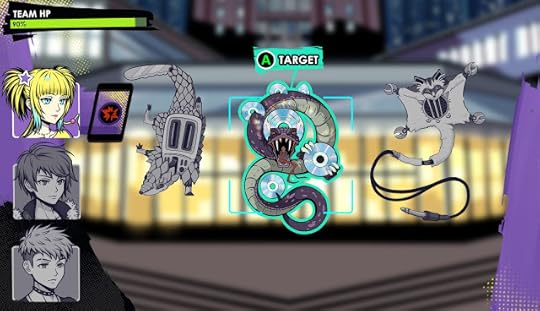
When I sit down andthink about the future of indie game development, well... I don’t feelconfident, to say the least. I think I massively miscalculated both the stateof the market and the potential for making a profit with indie games.
As always, I want toclarify what I mean by indie games. I’m not talking about AA titlesbacked by publishers that are essentially smaller AAA productions. I mean indiegames made with little to no budget. If you check my itch.io page, you’ll see that I’ve already published a dozenvisual novels and narrative-heavy games, with Spellbound Hearts beingthe only commercial release.
I think only a few ofyou know the story behind why I decided to make Spellbound Hearts acommercial game. The reason was simple: I enjoyed making it, and I felt itdeserved a commercial release. But the most important reason was because Iwanted to learn the process of publishing a commercial game on Steam so I’d bebetter prepared for my future projects. I did almost no marketing oradvertising, and the game has sold around 300 copies. Since it’s so cheap, itbarely made me $170 in profit. But still, it was a great experience that helpedme understand the process for my next commercial games.
When I first got intoindie game development, it was a hobby, and sometimes I feel like it shouldhave stayed that way. There are several reasons why I don’t think this is aviable path for making a living.
The Reality of theMarket
First, making a decentgame requires a massive time investment. At the same time, you’re competingwith countless other releases hitting the market daily. Unfortunately, the onlyviable marketplace for selling indie games is Steam, and we’re looking at 20–60releases every single day.
I get that some mightthink most of those games are low-quality asset flips, but I’d argue that asignificant percentage of them are high-quality projects. Many of these gameshave taken their developers 2–5 years to create. There's this misconceptionthat gets repeated all the time: that most indie games are low effort, but realitytells a different story.
Back in 2019, around9,000 games were released on Steam. In 2024, that number nearly doubled to 19,000games. If that’s not an indication of oversaturation, I don’t know what is.And this doesn’t mean that each new year wipes the slate clean. Every newrelease is added on top of the massive backlog of already great games.That’s why Steam now has over 100,000 games, many of them high quality.
On top of that, mostplayers primarily consume AAA content: Fortnite, PUBG, Call of Duty, LoLetc. The slice of the market available to indie games is already small, andwith thousands of new indie games fighting for attention, the chances ofsuccess keep shrinking.
The MarketingDilemma
Yes, marketing shouldstart from the moment you conceive your game—before writing a single line ofcode. But if you start making your game now, and it takes 2–4 years to develop,by the time you release it, you’ll be competing with 40,000–80,000 moregames in the same marketplace. Sure, there are exceptions: games that go viraland succeed, but luck plays a huge role, and you can’t just design indiegame content with the expectation that it will go viral.
Comparing Indie Gamesto Indie Book Publishing
When I say Imiscalculated the market, it’s because I initially thought indie gamedevelopment would work similarly to self-publishing on Amazon. I was sowrong.
It’s funny because thebook industry is way more saturated than the game industry, yet it’sstill easier to make money from books. Here’s why:
Writing a book is far less complex than developing a game. A decent writer can finish a novel in a few months, publish it, and quickly move on to the next project without a huge financial investment. If a book fails, you can start a new one without breaking the bank. You don’t even need to pay for a book cover (though I recommend it). Books have quick iteration times, meaning you can release multiple books a year. Some will fail, but some will succeed, and the process is relatively fast. Following trends is much easier in book publishing. If you start writing a trend-driven book today, you can release it within months (and I know of some people who write books within a month). In contrast, if you start a trend-based game today, by the time you finish in 2–4 years, that trend might be completely irrelevant.My Plan MovingForward
As I mentioned in myprevious blog post, I plan to release Cook or Be Cooked as a short gameif I don’t secure a publisher and my Kickstarter campaign fails.
As for my next game, ParallelPulse, I’m planning to take a break before resuming work. Indie gamedevelopment is incredibly frustrating, especially when balancing it with dailylife, especially if you have a kid and a job.
Right now, I’m alsoapplying for Creative Europe funding, hoping to secure support for 60%of the game’s budget. Unfortunately, competition has become evensteeper. Last year, many publishers stopped making deals, so a ton of studiosturned to grants for funding.
The situation issimilar to Steam’s 19,000-game flood. Just because all those games aren’tdirect competitors doesn’t mean they don’t impact the ecosystem. Two years ago,if your Creative Europe proposal met the threshold score, you’d receivefunding. Most of the times, Creative Europe applicants wouldn’t absorb theentire budget because a lot of proposals wouldn’t reach the 70% threshold. Butlast year, the number of applicants skyrocketed. Many proposals were lowquality, but plenty of good ones exceeded the threshold for the firsttime. The bar has been raised, and what used to require a 70% score now needsat least 80%.
To put things intoperspective, CD Projekt Red is one of the companies competing for thesame funding. So… yeah. Good luck with that.
What’s Next for Me?
That being said, I’mnot quitting game development. But I do want to approach it smarter, ina way that doesn’t drain me financially. After Parallel Pulse, I’mconsidering joining other teams, either as a programmer or writer, rather than managingand financing everything by myself. That being said, Parallel Pulse will take acouple of years to be completed, so this isn’t an immediate change of plans(despite my rant above).
At the same time, I’mthinking of taking a short break to write a couple of books after releasing Cookor Be Cooked. I think it was a mistake to abandon that revenue stream, especiallysince it’s something I enjoy as much as making video games.
I know this post mightsound a bit depressing, but it’s better to see reality early rather than wasteyears on projects that don’t make sense.
One thing I’ve alsostarted questioning is the idea that indie developers should release as manygames as possible to increase their chances of success. Given how manygames flood the market daily, this approach might be flawed. I’m starting tothink that YouTubers who also make games might have the right idea. Longdevelopment cycles might actually be better because they allow more timeto market the game while also producing YouTube content. Of course, this isn’tan ideal solution, since many YouTubers make part of their income from theirchannels, not their games. But for them, long development times mean morecontent for their audience, which in turn keeps interest in their game alive. That’ssomething I’m considering for Parallel Pulse.
That being said, ifyou’re just starting out, you should definitely release as many short games aspossible to learn the process. I released a dozen free short to medium sizedgames before releasing my first commercial game, and I find it as an excellentstrategy if you’re just starting out.
The Future of Cook or Be Cooked: Challenges, Strategy, and What Comes Next
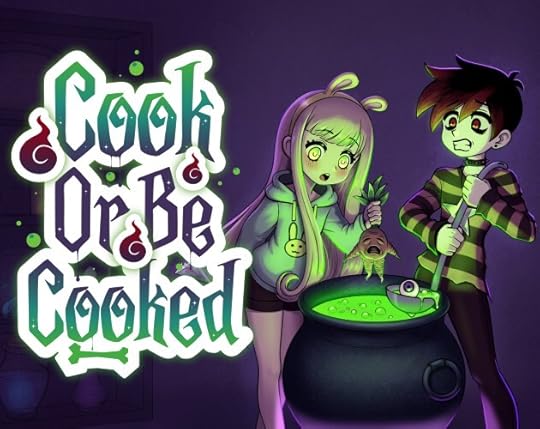
It’s been a while since I last wrote a long-form update, so I think it’s time to bring everyone up to speed. Well, at least the few people following me 😊
In the world of startups, there’s a saying: fail fast. The idea behind it is that the sooner you recognize something isn’t working, the better! It saves you time, effort, and money before sinking too many resources into it. And I think this applies to Cook or Be Cooked. Let me explain.
My target audience for this game is female under 25, something I confirmed last year during AthensCon, a pop culture festival in Greece. Everyone in that target group who played it was excited about it and wishlisted it. Having that direct feedback loop is invaluable since it helps you understand whether your game has potential.
The biggest challenge, though, is actually reaching that audience. For various reasons, I think it’s going to be extremely difficult for Cook or Be Cooked to gain traction without proper marketing. And honestly, I have no idea how to effectively reach potential players on my own compared to my other game: Parallel Pulse.
That’s why I’ve decided to take a different approach: rather than investing too much more time, I’ll reach out to publishers and see if there’s any interest in the game. As you all know, securing a publishing deal in today’s market is tough, and I don’t think my chances are very high. That’s why I’m also considering running a Kickstarter campaign to gauge interest and see where the project stands.
Now, I know what you're thinking: Kickstarter requires an established audience to succeed. And that’s the paradox: if you already have a dedicated audience, you probably don’t need a Kickstarter unless you're looking for initial funding. In my case, I don’t have a large following, nor do I have the financial capacity to run a big marketing campaign to attract backers for my Kickstarter Campaign. And honestly, spending a bunch of money just to fundraise for the game feels a bit absurd.
That being said, I’m not planning to abandon the game. Cook or Be Cooked is designed in a way that allows for a self-contained one-hour experience, that’s what the initial plan was anyway. So, worst-case scenario, I’ll release it as a shorter game, similar to my previous title, Spellbound Hearts. I’ve already invested significant time and resources into it, and it would be a disservice to both myself and my team if we didn’t ship it. Since the game was made to support a shorter playtime, I’m going to move forward with that approach. At the very least, it will serve as a solid portfolio piece where all of us will be proud of while still appealing to our target audience.
In my next post, I’ll go into more detail about my overall strategy moving forward.
November 29, 2024
The Status of My Failed Spooktober Jam Game: Cook or be Cooked
Hey everyone! I wanted to give you an update on my Spooktober jam game and share some news.

So, here’s the thing: I wasn’t able to publish my game during the jam. There were a few reasons for this, but the main one was that it just wasn’t as polished as it needed to be. Despite that, working on the game was a blast, and I realized I wanted to take it further. That’s why I’ve decided to expand it into a full-fledged game, with plans to release it in 2025.
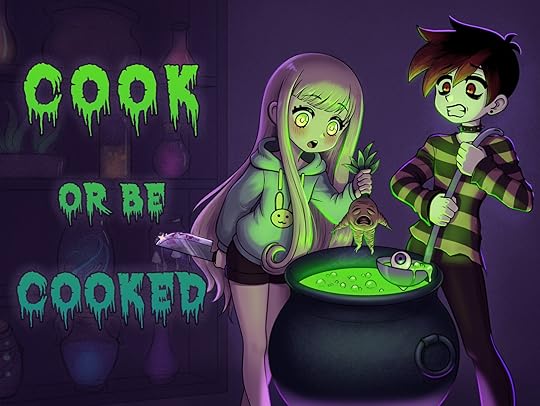
To make that happen, we’ve essentially gone back to the drawing board. We’re programming everything from scratch to fix bugs and make the game scalable for a larger experience. Anis, our talented pixel artist is creating more assets and helping us refine the game’s vibe—imagine a spooky Harry Potter-esque atmosphere.

We’ve already submitted a Steam page for review, and we’re also working on an itch.io page. I’m holding off on making big announcements until we have the final graphics ready, but it’s all coming together.
On the story side, I’ve finalized the direction. The first part of the narrative, including the dialogues, is fully written and edited. What held me up for a while was figuring out where the story should go next. But after some brainstorming time, I’ve got a clear direction! If you’ve been following my devlogs, you know the game’s plot started with inspiration from Hansel and Gretel. The main storyline, however, is shifting gears toward something more like Oliver Twist. It’s a cool mix, and I’m really excited to see how it all plays out.
Our programmer, Nick, had this awesome idea to add a simple but engaging cooking mechanic. It’s shaping up to be a big part of the second half of the story, where you become a restaurant owner and get to cook for vegetarian vampires (and why not, werewolves).
[image error]
Cooking MechanicOverall, I’m glad with how this project is evolving. Thanks so much for reading and for supporting this journey—it means a lot! Stay tuned for more updates soon. 😊
September 22, 2024
Should you juggle between multiple game dev projects?
I think the majority of indie devs juggle multiple projects, and for good reason. I want to talk about whether this approach is beneficial or not. You often hear people saying you should focus on one thing at a time, but I believe that what's right for one person isn't necessarily right for another. Humans are naturally inclined towards multitasking, not in the sense of doing two things simultaneously, but in the sense of breaking up your day to work on different things. You might spend a couple of hours on one project, then switch to another for a bit, and so on.
First, let’s look at the issue of starting too many projects and how it might impact your ability to actually finish a game. A common trap is starting something new, working on it for a few weeks or months, then dropping it for a shiny new idea. I’ll admit, this has happened to me occasionally, but usually for reasons not related to the allure of a new project—sometimes life just gets in the way, and you have to reduce your workload. What I’m talking about here are the cases where a developer constantly starts something new because the next idea seems more exciting. Before you know it, you’ve got a backlog of half-finished projects, none of which are close to completion. I’ve struggled with this while writing books too. You need to be consistent, especially if you're writing a series, but you get halfway through and start a new book instead. The same applies to game development: if you keep starting new projects, you probably won’t finish any. That’s okay if you’re doing it as a hobby, but if you’re serious about being a professional developer, you need to commit to what you start.
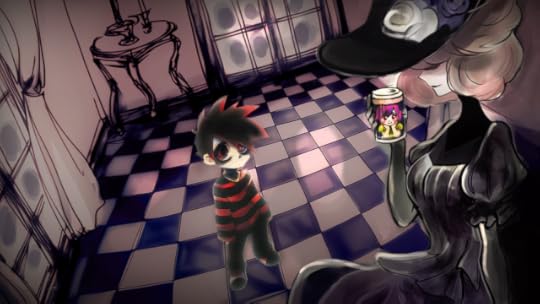 While developing Parallel Pulse, I'm also developing my new horror themed game called: Cook or be Cooked.
While developing Parallel Pulse, I'm also developing my new horror themed game called: Cook or be Cooked.On the flip side, juggling multiple projects can actually be beneficial. Humans get bored, and working on the same project day in, day out, can lead to burnout. Not everyone deals with this, but in my case, working on two or three projects at a time has been helpful. It keeps things fresh, helps you learn new things, and gives you a creative break from focusing on just one game. This has been especially motivating for me, particularly when collaborating with a team. For my personal projects, I try to keep the scope limited and aim to finish smaller projects. Whether it’s a commercial release in six months or a quick game jam in a month, completing something small gives a sense of accomplishment and keeps the motivation up.
The key here is knowing your limits. I’ve learned over time not to exceed them, because that’s when things start to go wrong. In the end, there’s no one-size-fits-all answer to whether you should juggle multiple projects. It’s all about finding what works best for you and your workflow.
September 6, 2024
Why I’m Participating in This Year’s Spooktober Jam
Before I explain why I made this decision, let me give you some context about last year’s Spooktober Jam. Participating in this jam has become a tradition for me—this will be my fourth time taking part. However, this time around, I’ll be taking on a different role. While I’ll still lead the project, I won’t be handling the programming. Since I don’t have much experience with the Godot engine, I’ll focus on what I’m best at: production and narrative design.
The idea for the narrative of this game came to me last year, right after finishing our entry for the previous Spooktober Jam. I thought, “What if we did a twisted version of the classic fairy tale Hansel and Gretel, but with a humorous twist similar to The Addams Family?" And that's when the idea for Cook or Be Cooked was born.
At first, I shelved the idea because I had other projects and personal matters to focus on, but the concept kept resurfacing in my mind—how the story should unfold and how the visuals could complement the narrative.
I started pre-production some time ago, working on initial concepts and creating a spreadsheet to organize my ideas and plot the story. To be honest, I could have started this project earlier because I think it has the potential for a proper commercial release. But I decided to officially kick off development with this year’s October jam for a few reasons.
Why Spooktober Jam?First, Spooktober Jam has become a tradition for me, and it felt appropriate to start this project now to honor the fact that the idea was born after last year’s jam ended.
Second, this jam attracts a lot of participants, and it’s more visible than other game jams. If streamers or YouTubers notice our game, we could gain some feedback and additional visibility, which is important for the game’s development. We’re planning to release a self-contained demo by the end of the month, and I expect the full game to be ready in five to six months. This aligns with my strategy of releasing one or two games per year.
And, most importantly: I’m just looking forward to having some fun with this project! I hope everyone participating in the jam is having a blast, and I wish you all the best!
Below you can find some draft concepts of the characters.




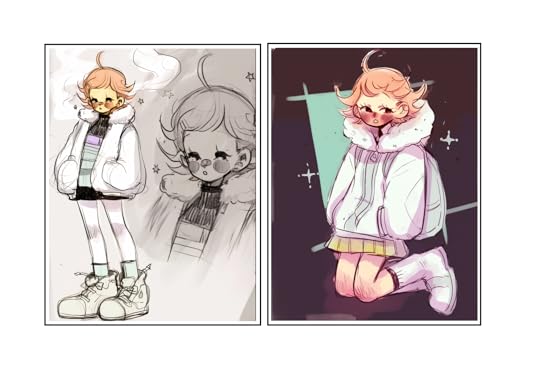

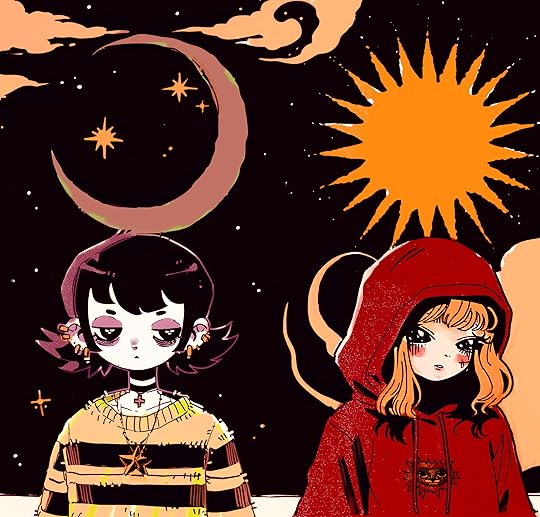
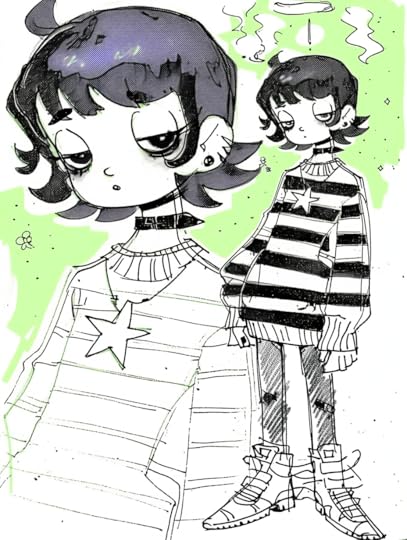
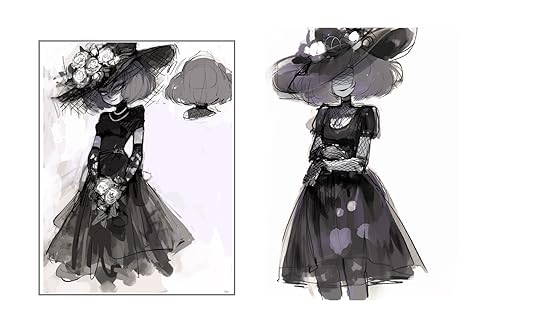
September 5, 2024
Switching from Unreal Engine to Godot: Why I Made the Change
It’s been about a month since I wrote a post explaining why I chose Unreal Engine 5 to develop my game. Now, after several frustrating months of trying to overcome engine-specific barriers, I’ve made the difficult decision to switch to Godot. It’s a bit embarrassing to admit this after all the time I spent learning Unreal, but some issues with the engine, particularly with 2D development, made it impossible to continue.
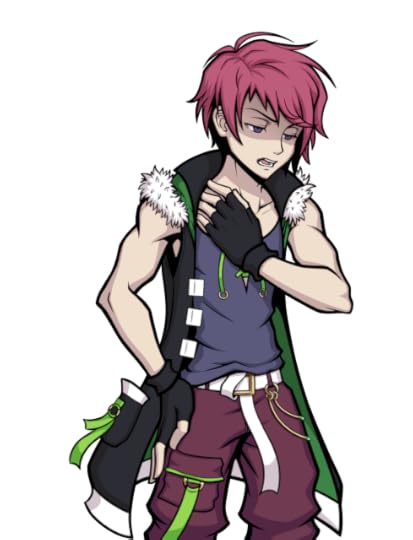
I want to clarify that I’ve been learning Unreal Engine for a few months, mostly for 3D game development, which Unreal excels at. There’s no doubt that for 3D, Unreal is one of the best engines out there—if not the best. However, when it comes to 2D games, the situation is entirely different. Unreal Engine has so many issues handling purely 2d games that make the engine impossible to use. Let me try and explainthe roadblocks I’ve faced over the past few months to better understand why I’ve decided to switch.
Camera Bounds
The biggest challenge I encountered from the beginning was the setup of camera boundaries. While most top-down 2D games don’t require strict camera bounds, it’s a crucial part of my game’s design. I searched everywhere but couldn’t find a ready-made solution for Unreal. For an experienced developer, this might be a manageable problem, but for someone like me, just starting, it was overwhelming. It took me nearly a month to create camera bounds, and even then, I only managed it after finding a 3D tutorial and adapting it to my 2D game—a painful process. What's worse is that these bounds don't work properly in smaller locations where there's not much room. The camera loses focus and makes the game look bad.
Texture Handling & Sorting
Another major hurdle was handling textures. In Unreal, creating translucent textures for 2D sprites often leads to bugs, with sprites disappearing entirely. You won’t find this issue mentioned in YouTube tutorials. The recommended fix—switching to masked materials—solves some problems but ruins the ability to sort textures properly. I had to develop a workaround by layering sprites and adding triggers to toggle visibility based on their position. It worked, but applying this to every single background was incredibly time-consuming. For other engines, this is default behavior that comes out of the box since it's so commonly used.
Texture Flickering, Pixel Warping, and Jagged Lines: My Breaking Point
The final straw came with texture flickering and jagged lines. For over a week, I’ve been stuck trying to fix an issue where my backgrounds, which are hand-drawn, look fine in the editor but become distorted and uneven when I build the game. I’ve tried everything—changing filters, tweaking settings—but nothing has worked. This pushed me to reconsider whether Unreal Engine was right for my project.
Why Godot?Given the struggles I’ve had with Unreal Engine and the fact that most of these issues don’t exist in other 2D-focused engines, I decided it was time to make the switch to Godot. Here’s why:
Collaboration: Many of the people I collaborate with are already using Godot. If I run into trouble, they can help me much more easily than if I stick with Unreal.Resources: The resources available for 2D games in Godot are far more extensive. Even if I can’t find an exact match for my problem, the knowledge from other engines like Unity is often transferable to Godot—something I couldn’t do with Unreal.Indie-Friendly YouTubers: Godot has a growing presence in the indie game community, with several YouTube channels that highlight unique, artistic games—exactly the type of attention I’d like my game to attract.Upcoming Console Support: Godot will soon have full console support, and its pricing is accessible for indie developers who want to port their games to multiple platforms. This was a deal breaker for me before.Community: The Godot community is very supportive and quick to offer solutions and advice, which is essential for a beginner like me. While Unreal’s community is large, the vast range of projects and edge cases make it harder to get specific advice.In conclusion, I probably should have followed the advice of other developers and chosen an engine like Godot from the start. Unreal Engine is a fantastic tool, and I’d definitely return to it for 3D projects in the future. But for now, I need to take a different path and focus on completing my game in an engine better suited to my needs. It may come with delays, but I’m confident it’s the right choice.
September 4, 2024
Why Indie Games Aren't Smaller AAA Productions
This topic has been on my mind for months, but I was never motivated enough to fully explain why indie game development is vastly different from smaller AAA (or AA) productions. While, on the surface, it may seem like indie developers can borrow techniques from AA-AAA studios, the reality is entirely different. Having worked in both AAA and indie teams, I can confidently say that the only true similarity is that both create video games.

But first, let me clarify what I mean by "indie game development." I'm referring to small teams, often fewer than five people, or solo developers, who work with little to no budget—unlike AA or AAA productions, where budgets can reach several millions. AA games, are indeed smaller versions of AAA productions, sharing many of the same workflows and resources.
Now, let’s focus on why indie developers can’t simply borrow strategies from AA or AAA studios.
The Small Business Analogy
To put it simply, being an indie developer is like running a small local fast-food joint, while AAA development is like running a McDonald’s franchise. The business models are completely different. The majority of marketing advice and development strategies are based on what works for AA or AAA studios, but for indie devs, these methods can lead to unnecessary complications.
Quick Iterations vs. Long Development Cycles
When a AAA studio begins development, they conduct extensive market research to define their target audience and ensure a profitable outcome. This approach works well for studios with multi-year development cycles and large budgets to sustain them over time. However, as an indie developer, you don’t have the luxury of waiting four to six years to release a game. Like that small fast-food joint, you need to rely on instinct, quick iterations, and rapid market evaluation.
Indie developers must be agile, adapting to trends or niche opportunities that could gain traction quickly. This means that having shorter development cycles—anywhere from six to 12 months—can be more sustainable. If a game flops, the losses are minimized, and you can move on to your next project quickly. On the flip side, long development cycles increase the risk, such as team members leaving for more lucrative projects, and you can’t blame them. Everyone has to make a living.
Diversifying Income Streams
For indie developers, it’s also essential to diversify income sources. Aside from game sales, you can consider offering game development services, selling courses, or earning from sponsorships and content creation (like YouTube). This is a smart strategy, especially when you need to iterate quickly to survive in the highly competitive world of game development.
In conclusion, while AAA and AA strategies may look appealing, they are often impractical for indie developers. Shorter cycles, quick iterations, and a diversified approach are key to surviving in the indie space in most cases.



